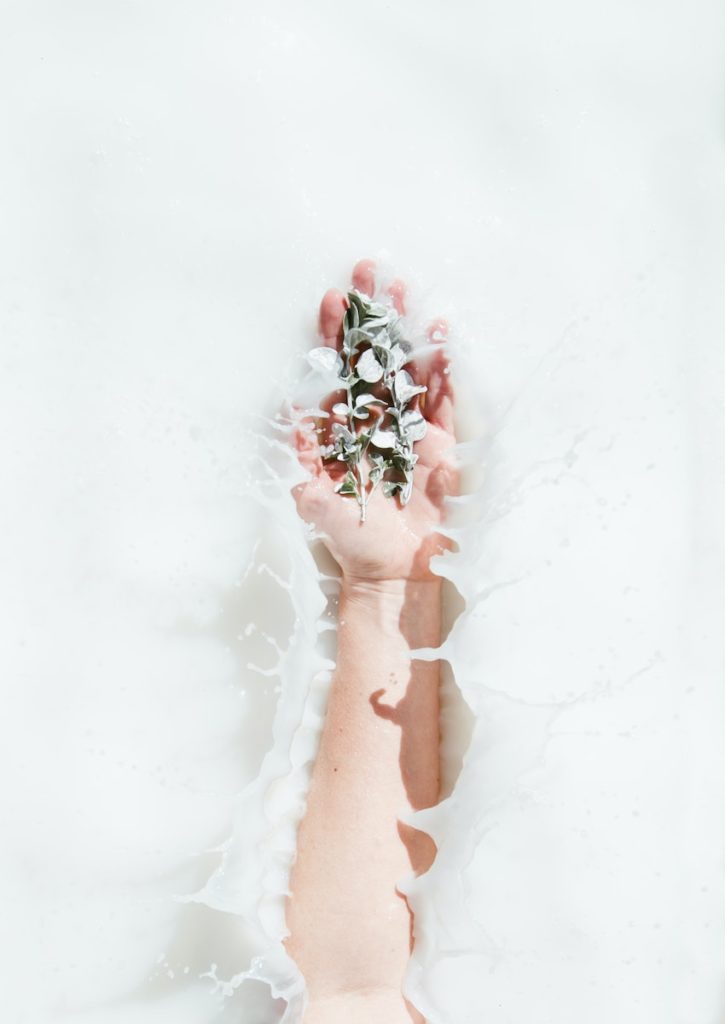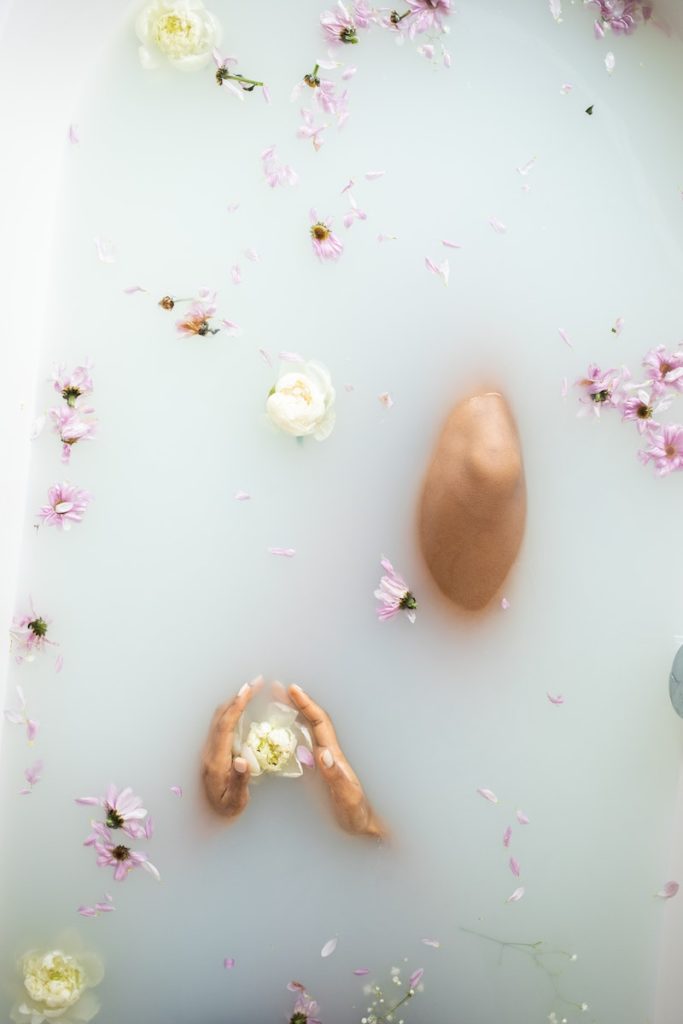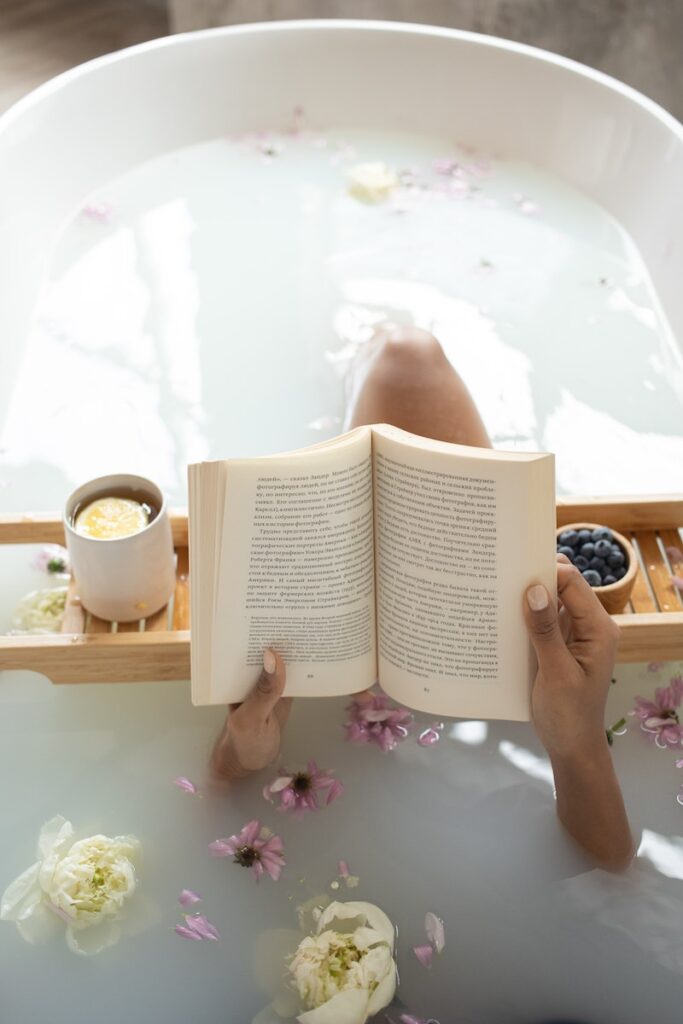I may get commissions for purchases made through links in this post. This helps me to offer you free recipes and blog posts.
Cleopatra, the legendary Queen of Egypt, is renowned not only for her political prowess but also for her timeless beauty. Throughout history, her name has become synonymous with allure and elegance. Among the many beauty secrets attributed to Cleopatra, one stands out as particularly intriguing: her use of donkey milk baths. This ancient skincare ritual has captured the imagination of people for centuries, sparking curiosity about its origins and effectiveness.
In the annals of history, Cleopatra’s beauty regimen has been extensively documented. According to ancient texts and historical accounts, she was known to indulge in luxurious donkey milk baths regularly. It is said that she believed these baths would help maintain her youthful appearance and radiant skin. But what is the truth behind this beauty secret? Is there any scientific basis for the benefits of donkey milk baths, or is it merely a myth shrouded in ancient lore?
Join us on this captivating journey as we uncover the truth behind Cleopatra’s donkey milk baths and explore the potential benefits they may hold for our own skincare routines.

Historical Background
To truly understand the significance of Cleopatra’s donkey milk baths, we must delve into the historical context of ancient Egypt. In this era, beauty and skincare held great importance, and the use of natural ingredients was prevalent in various beauty rituals.
Donkey milk, in particular, held a special place in ancient Egyptian culture. It was considered a precious commodity and was often reserved for the elite, including royalty and the wealthy. The milk was highly regarded for its nourishing and moisturizing properties, making it a sought-after ingredient for skincare.
Cleopatra, being a queen of immense wealth and influence, had access to the finest ingredients for her beauty regimen. It is believed that she recognized the potential benefits of donkey milk for her skin and incorporated it into her daily bathing routine. The milk was said to be sourced from a herd of specially cared-for donkeys, ensuring its purity and quality.
The use of donkey milk in skincare was not limited to Cleopatra alone. Historical records indicate that other prominent figures in ancient Egypt, such as Nefertiti and Queen Tiye, also embraced this beauty practice. The tradition of donkey milk baths continued for centuries, passed down through generations as a symbol of beauty and luxury.
The allure of Cleopatra’s beauty rituals, including her donkey milk baths, has captivated the imagination of people throughout history. It is a testament to the enduring fascination with ancient Egypt and the desire to uncover the secrets behind Cleopatra’s legendary beauty.
The Science Behind Donkey Milk
While the historical significance of donkey milk in ancient Egypt is well-documented, it is essential to explore the scientific aspects of this unique ingredient to understand its potential skincare benefits.
Donkey milk is known for its rich composition, containing a variety of vitamins, minerals, and proteins that can contribute to its purported skincare properties. It is naturally high in vitamins A, B1, B2, C, and E, which are known for their antioxidant and anti-aging effects. These vitamins help protect the skin from free radicals, promote collagen production, and improve overall skin health.
Additionally, donkey milk is rich in minerals such as calcium, magnesium, and phosphorus, which play a vital role in maintaining the skin’s moisture balance and promoting cell regeneration. These minerals can help hydrate and nourish the skin, leaving it soft, supple, and rejuvenated.
One of the unique components of donkey milk is lysozyme, an enzyme with antimicrobial properties. Lysozyme helps protect the skin against harmful bacteria, reducing the risk of infections and promoting a healthier complexion.
Furthermore, donkey milk contains casein and whey proteins, which are known for their moisturizing and soothing properties. These proteins can help hydrate and calm the skin, making it an ideal ingredient for individuals with dry or sensitive skin.
While scientific research on the specific benefits of donkey milk for skincare is limited, anecdotal evidence and historical accounts suggest that it may contribute to a more youthful and radiant complexion.

Cleopatra’s Beauty Ritual
Cleopatra’s donkey milk baths were not merely a simple act of bathing; they were a meticulously crafted beauty ritual that involved specific techniques and ingredients. Understanding the process behind Cleopatra’s skincare regimen can provide insights into her commitment to maintaining her radiant and youthful appearance.
The first step in Cleopatra’s beauty ritual was to prepare the donkey milk bath. Fresh donkey milk was carefully collected from specially cared-for donkeys, ensuring its purity and quality. The milk was then mixed with warm water in a luxurious bathing vessel, creating a soothing and nourishing bath.
Once the bath was prepared, Cleopatra would immerse herself in the milk-infused water, allowing her skin to absorb the beneficial properties of the milk. The bath was not a quick dip but rather a leisurely soak, allowing the milk to work its magic on her skin.
To enhance the effects of the donkey milk bath, Cleopatra would often incorporate additional ingredients into the ritual. Historical accounts suggest that she would add honey, known for its moisturizing and antibacterial properties, to the bathwater. Honey can help hydrate the skin, promote a healthy complexion, and provide a natural glow.
Another ingredient that Cleopatra may have used in her donkey milk baths is essential oils. These oils, derived from various plants and flowers, can offer additional skincare benefits such as soothing irritated skin, improving circulation, and providing a pleasant aroma during the bathing experience.
Cleopatra’s beauty ritual was not limited to her donkey milk baths alone. Historical records indicate that she followed a comprehensive skincare routine that included other practices such as exfoliation, moisturization, and the application of natural oils and ointments.
By meticulously following these beauty rituals, Cleopatra aimed to maintain her youthful appearance and radiant skin. While the specific benefits of donkey milk baths and the additional ingredients used in her skincare routine may have contributed to her beauty, it is important to note that Cleopatra’s overall lifestyle, diet, and genetics likely played a significant role as well.
The Benefits of Donkey Milk Baths
Cleopatra and other ancient Egyptians believed in the remarkable benefits of donkey milk baths for the skin. While scientific research on the specific effects of donkey milk baths is limited, anecdotal evidence and historical accounts suggest several potential benefits that have contributed to the enduring fascination with this ancient skincare practice.
- Moisturization: Donkey milk is known for its hydrating properties. The natural proteins and fatty acids present in the milk can help retain moisture in the skin, preventing dryness and promoting a soft and supple complexion.
- Nourishment: The vitamins and minerals found in donkey milk, such as vitamins A, B, C, and E, calcium, and phosphorus, can provide essential nutrients to the skin. These nutrients can help nourish and revitalize the skin, promoting a healthier and more youthful appearance.
- Anti-Aging Effects: The antioxidant properties of donkey milk, attributed to vitamins A and E, can help combat free radicals that contribute to premature aging. Regular use of donkey milk baths may help reduce the appearance of fine lines, wrinkles, and age spots, promoting a more youthful complexion.
- Soothing and Calming: Donkey milk is known for its soothing properties, making it suitable for individuals with sensitive or irritated skin. The proteins and enzymes in the milk can help calm inflammation and redness, providing relief and promoting a more balanced complexion.
- Skin Brightening: The natural lactic acid present in donkey milk can help gently exfoliate the skin, promoting a brighter and more even-toned complexion. Regular use of donkey milk baths may help reduce the appearance of dullness and promote a radiant glow.
Modern Interpretations and Products
Cleopatra’s beauty secret of donkey milk baths has left a lasting impact on modern skincare practices. The fascination with her ancient beauty ritual has inspired the development of various donkey milk-based products and sparked a renewed interest in natural and luxurious skincare ingredients.
In recent years, donkey milk has gained popularity as a key ingredient in skincare formulations. It is now commonly found in products such as soaps, creams, lotions, and masks. These products aim to harness the potential benefits of donkey milk and provide a modern interpretation of Cleopatra’s beauty secret.
Donkey milk-based skincare products often highlight the moisturizing and nourishing properties of the milk. They are marketed as being suitable for all skin types, including sensitive and dry skin. The proteins, vitamins, and minerals present in donkey milk are believed to help hydrate, rejuvenate, and promote a healthier complexion.
Additionally, donkey milk-based products may also incorporate other natural ingredients known for their skincare benefits. These can include botanical extracts, essential oils, and plant-based antioxidants, further enhancing the overall efficacy and sensory experience of the products.
The popularity of donkey milk-based skincare products can be attributed to the ongoing interest in natural and organic beauty solutions. Consumers are increasingly seeking products that are free from harsh chemicals and artificial additives, and donkey milk fits into this growing trend.
Embracing the Beauty Rituals of Cleopatra
While the specific benefits of Cleopatra’s donkey milk baths may be subject to debate, there is no denying the allure and fascination surrounding her beauty rituals. Cleopatra’s dedication to self-care and her pursuit of beauty serve as a reminder of the importance of taking time for ourselves and embracing skincare rituals that make us feel pampered and confident. Here are some ways we can incorporate elements of Cleopatra’s beauty rituals into our own skincare routines:
- Hydration is Key: Cleopatra understood the importance of hydration for maintaining healthy and radiant skin. Incorporate hydrating ingredients such as hyaluronic acid or aloe vera into your skincare routine to keep your skin moisturized and plump.
- Gentle Exfoliation: Cleopatra’s donkey milk baths may have provided a gentle exfoliating effect, promoting a brighter complexion. Incorporate a mild exfoliator into your routine to remove dead skin cells and reveal a smoother, more radiant skin.
- Natural Ingredients: Cleopatra’s beauty rituals often involved natural ingredients such as honey and essential oils. Explore the benefits of natural skincare ingredients and incorporate them into your routine. Look for products that are free from harsh chemicals and artificial additives.
- Self-Care Rituals: Cleopatra’s beauty rituals were not just about skincare; they were also about self-care and relaxation. Take time for yourself and create a skincare routine that feels indulgent and enjoyable. Treat yourself to a luxurious bath, light candles, and play soothing music to create a spa-like atmosphere.
- Confidence and Inner Beauty: Cleopatra’s beauty went beyond her skincare rituals; it was also about her confidence and inner radiance. Embrace your own unique beauty and practice self-love. Remember that true beauty comes from within.

While we may not have access to donkey milk baths or the resources of an ancient queen, we can still draw inspiration from Cleopatra’s beauty rituals and adapt them to our modern lives. By prioritizing self-care, embracing natural ingredients, and nurturing our inner beauty, we can create our own version of Cleopatra’s timeless allure.
If you’re interested in further reading on Cleopatra’s beauty secret and skincare, here are some resources you may find helpful:
- “Cleopatra’s Secrets of Beauty” by Diane Morgan: This book delves into the beauty rituals and practices of Cleopatra, exploring the historical context and providing insights into her skincare routines.
- “The Beauty of Cleopatra: Ancient Secrets for Modern Beauty” by Kitty Moore: This book explores Cleopatra’s beauty secrets and offers practical tips on how to incorporate ancient beauty practices into modern skincare routines.
- “The Skincare Bible” by Dr. Anjali Mahto: While not specifically focused on Cleopatra, this book provides a comprehensive guide to skincare, covering topics such as understanding your skin type, choosing the right products, and establishing a skincare routine.
- “The Little Book of Skin Care: Korean Beauty Secrets for Healthy, Glowing Skin” by Charlotte Cho: This book explores the Korean skincare routine, which emphasizes a multi-step approach to skincare. While not directly related to Cleopatra, it offers insights into different skincare practices.
- Online articles and resources: There are numerous online articles and blog posts that discuss Cleopatra’s beauty secrets and their relevance to modern skincare. Websites like Vogue, Allure, and Byrdie often feature articles on historical beauty practices and their modern interpretations.
When it comes to Cleopatra’s beauty secrets and donkey milk baths, there are several historic sources that provide insights into these practices. Here are a few notable sources:
- Pliny the Elder’s “Natural History”: Pliny the Elder, a Roman author and naturalist, wrote extensively about various topics, including beauty practices. In his work “Natural History,” he mentions Cleopatra’s use of donkey milk baths as a beauty treatment.
- Cassius Dio’s “Roman History”: Cassius Dio, a Roman historian, also mentions Cleopatra’s beauty rituals in his work “Roman History.” He describes her use of donkey milk baths as part of her skincare routine.
- Galen’s “On the Properties of Foodstuffs”: Galen, a Greek physician and philosopher, wrote about the medicinal properties of different foods and substances. In his work “On the Properties of Foodstuffs,” he mentions the use of donkey milk for skincare and its benefits for the skin.
- Ancient Egyptian Texts: While not specifically mentioning Cleopatra, ancient Egyptian texts provide insights into the use of donkey milk for skincare in ancient Egypt. These texts highlight the significance of donkey milk as a luxurious and nourishing ingredient for beauty rituals.
